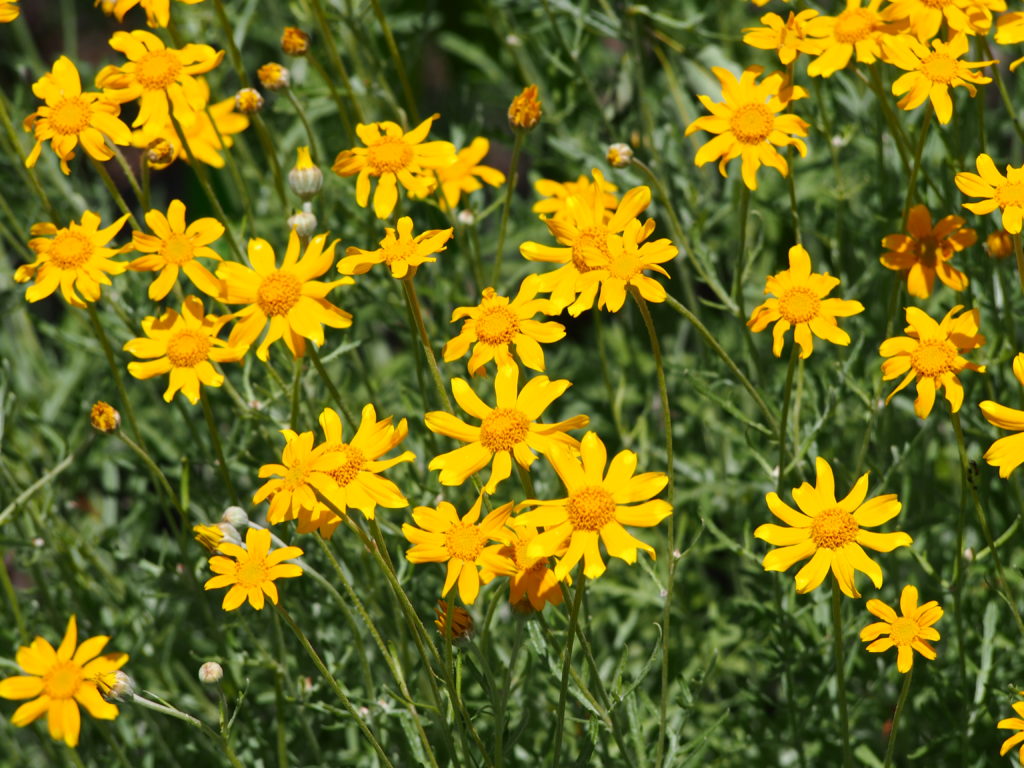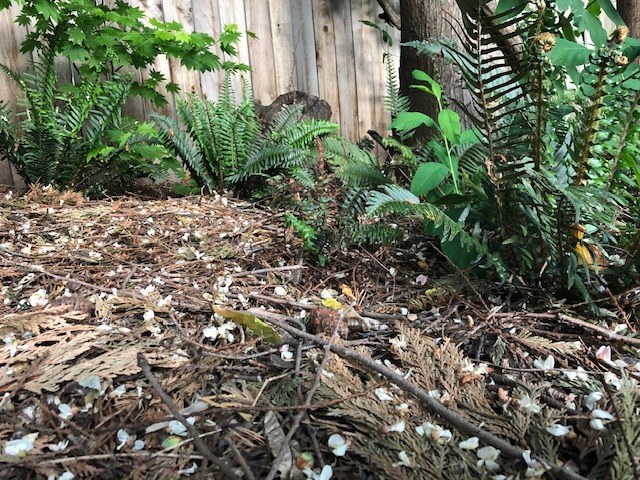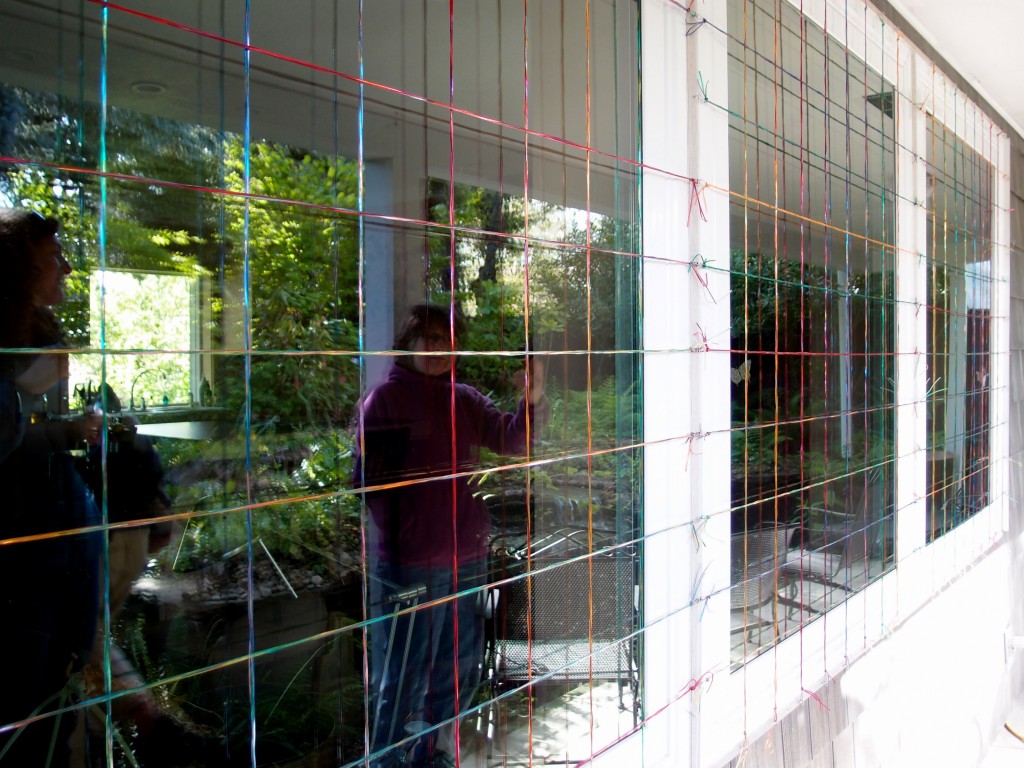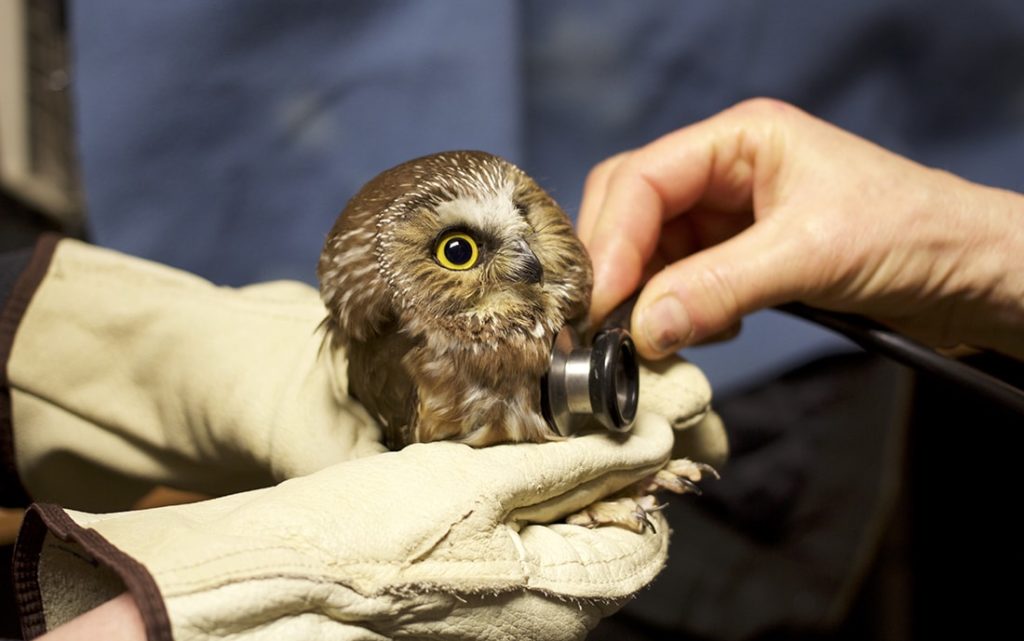Make your outdoor space welcoming for birds and beneficial insects
By Stephanie Herman, Portland Audubon Wildlife Care Center Manager & Megan Van de Mark, Backyard Habitat Certification Program Co-Manager
This article was originally published in the March/April 2021 issue of The Warbler.
Here are tips from our Wildlife Care Center and Backyard Habitat Certification Program (a collaboration with Columbia Land Trust) on steps you can take to make your outdoor space more welcoming and safe for birds and beneficial insects:
Provide Water by Installing a Water Feature.
Sufficient and reliable sources of clean, fresh water are critical for birds and beneficial insects for drinking and bathing. You can help by installing and maintaining a bird or bug bath in your outdoor space. It doesn’t need to be fancy. In fact, decorative bird baths can be less effective than do-it-yourself versions made with repurposed shallow pans, trays, or plant pot saucers.
Whatever container you use, a shallow depth is key; no more than 2 inches. Fill with an inch of water. Add pebbles, small rocks, or twigs to give birds something to stand on or bugs something to land on. Consider adding a moving or dripping water feature, such as a solar bubbler. Birds are drawn to the sound of moving water. Place the bath near shrubs, and when appropriate, at ground level. Keep it clean, changing the water frequently.

Photo Credit – Nikkie West
Provide Food by Planting Native Plants.
Ensuring access to adequate, reliable, and appropriate food is critical to birds and beneficial insects. The loss of habitat and decline in native plant species, among other factors, is directly impacting the availability of food, and consequently, bird and beneficial insect populations. You can help by planting locally native plants in your outdoor space. The majority of birds and insects are specialists, adapted to and relient upon a particular food source, oftentimes specific plants native to an area.
By planting locally native plants, from multiple vegetation layers and with different bloom times, you can help provide critical food to a diversity of birds and beneficial insects, over the course of multiple seasons. Fall, winter, and spring are all good times to plant. Putting plants in the ground during the cooler, moister months gives roots a chance to grow before the dry, hot summer months.
When choosing what to plant, observe the conditions of your outdoor space. To help plants not only survive, but thrive, choose plants that are adapted to the site’s soil, light, and moisture conditions and size of the space. When there’s space, consider planting a large canopy tree.

Provide Shelter by Easing Up on the Clean Up
We all need appropriate shelter. For birds, shelter is crucial for offering protection from predators and weather as well as for providing nesting habitat. You can help provide shelter for birds and beneficial insects in your outdoor space by planting native plants, but also by easing up on the clean up. Unkempt outdoor spaces can provide great habitat for birds and other wildlife.
Hundreds of insects and arachnids overwinter in the leaf “litter” layer. By leaving the leaves, or even delaying clean up, these beneficial critters are able to complete crucial life cycle steps. These insects and arachnids are critical food sources for birds, including baby birds. When conducting maintenance in your outdoor space, such as removing thicket-forming noxious weeds (ex. blackberry), clearing brush, or having tree work done, be aware of nesting times. Consider delaying until fall or winter, after nesting season. When pruning trees and shrubs, look for active nests. When possible, repurpose downed branches on site, creating wildlife brush shelters.

Photo credit Megan Van de Mark
Learn to Be a Good Wildlife Neighbor
Creating space and resources for native wildlife can be fun and rewarding. That said, an important part of being a good neighbor to wildlife is being aware of how proximity between people and wildlife can create opportunities for potential harm to wildlife and sometimes damage or inconvenience for people. Learning to prevent and respond to these potential conflicts in a humane way is crucial.
Reduce Hazards
- Reduce unnecessary outdoor lighting, particularly during spring and fall migration.
- Avoid the use of pesticides, rodenticides, and glue traps.
- Keep cats indoors or in outdoor enclosures, such as a catio.
- Treat your windows to prevent bird collisions.

Solve Conflicts Humanely
At some point, one of your wildlife neighbors might do something inconvenient or harmful for you or your property, such as digging up your flower bulbs or nesting in your attic. Often you might be willing and able to tolerate these impacts, but sometimes it’s necessary to solve the issue. A common first response is to try and remove the animal causing the issue. However, killing, trapping, removing, and/or relocating animals are never humane options. They also don’t provide long-term solutions. Remove one squirrel from your attic without addressing why it was there in the first place and others will come.
The good news is that most situations can be humanely resolved by taking simple steps to prevent access (i.e. capping your chimney), remove attractants (i.e. removing or securing food sources), and/or provide alternatives (i.e. putting up nest boxes). Successful approaches depend on the animal’s natural history. Portland Audubon’s Wildlife Care Center hotline is available 9a-5p every day for humane solutions consults.

Photo credit Ali Berman.
Give Wildlife Space
Inviting more wildlife into your outdoor space means you will get to see more of their lives! It’s exciting to watch as they come and go, have babies, and use the resources you’ve prepared for them. And sometimes nature can be hard to watch: when a crow predates on a nest you’ve been watching or when you’re worried that momma goldfinch is not with her fledglings enough. While we want to reduce and respond to human-caused harm, we don’t want to interfere with natural processes (that crow needs to eat too, and baby goldfinch needs to stay with her parents!). It’s often helpful to remember that wildlife are well adapted to taking care of themselves, and every healthy relationship needs boundaries!
To learn more about how you can make your outdoor space a welcoming and safe habitat, enroll in Backyard Habitat at backyardhabitats.org.
The Backyard Habitat Certification Program is a collaboration between Portland Audubon and Columbia Land Trust.